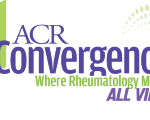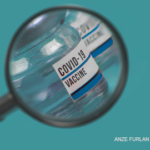Phases of Vaccine Development
First, for those of you who need a refresher, not all clinical trials are created equal. As you can imagine, it would be difficult to justify the time or expense associated with giving an experimental therapy to tens of thousands of patients unless there was good reason to believe that it might actually work. For that reason, clinical trials occur in phases:4
- Phase 1 trials typically involve fewer than 100 subjects. These are the first studies that involve giving an investigational agent to people. Phase 1 trials are typically dose-ranging studies, in which healthy volunteers are given varying amounts of the new drug. These studies focus on safety. Agents that seem promising in a test tube or in mice may have side effects that may prevent them from ever becoming a marketable drug.
- Phase 2 trials typically include 100–300 subjects. These are the first studies that involve giving the investigational agent to patients. Not all of us are healthy 22-year-olds; an agent that seems to be well tolerated in a healthy volunteer may be problematic in a patient with the disease of interest. These studies also give us our first chance to see if the agent may benefit patients, although the trials are typically too small to be definitive.
- Phase 3 trials determine which drugs go to market. These studies, which can involve thousands of patients, are used to show a new drug actually leads to better outcomes for patients with the disease of interest.
- Phase 4 trials involve post-marketing surveillance to determine if a drug still seems to be safe after people start taking it on a regular basis. The U.S. Food & Drug Administration (FDA) sometimes requires pharmacovigilance studies as part of its approval process.
At each phase, approximately one-third of agents fail to make it to the next step. Statistically, this means if a company starts phase 1 studies on 100 agents, only 19 have a chance of becoming a marketable drug.5 And that’s even before we start to consider non-scientific questions, such as market share, which will determine whether it’s worthwhile for a pharmaceutical company to try to get FDA approval. These statistics also don’t acknowledge the drugs that reach the end of the gauntlet only to have approval taken away during post-marketing surveillance.
As a young physician, I prescribed ticlopidine and trovafloxacin, and had samples of rofecoxib in my desk. None of these drugs exist anymore, because of problems discovered in phase 4 studies.
All of these issues affect the cost of bringing a drug to market. A phase 3, placebo-controlled trial costs, on average, $35.1 million.6 The average cost of bringing a new drug to market is $2.6 billion when you factor in the time costs, which is the amount of money a drug company loses by using its time to conduct research rather than just selling previously approved drugs more aggressively.7
When you think about it that way, it’s no wonder we have multiple versions of statins and Viagra, but haven’t discovered a new class of antibiotics since 1987.8 Working on a completely novel drug just costs too much money.
Of course, with COVID-19, we don’t have a choice. Given the stakes, and the potential market size, it’s not at all surprising that more than 200 vaccines are currently in development for SARS-CoV-2. Of these, the vast majority are still in pre-clinical development. Only 34 vaccines are in clinical trials; only nine are in phase 3 studies.9
Notably, Sputnik V has just started phase 3 testing. From what has been described by the Russian government, Sputnik V has completed only what we would consider a phase 1 clinical trial: The vaccine was administered to healthy patients and didn’t seem to make anyone sick. That’s it. And while the phase 1 study indicates the vaccine can induce an antibody response, the Russians have skipped an important step: The vaccine is being distributed without any actual proof it will work clinically to prevent disease transmission.10
That leaves us with seven vaccines, currently in phase 3 clinical trials, that provide us with our best hope of having a vaccine in hand by 2021. What do we know about these vaccines, and which are the most promising?



